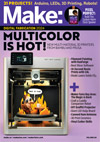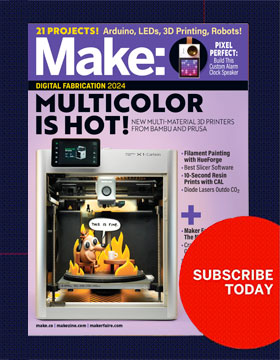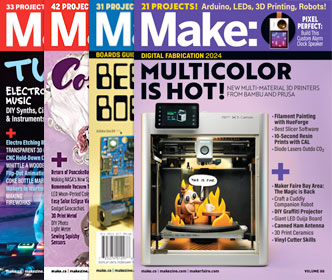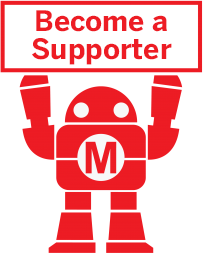PRESENTED BY


30 MIN - 1 HOUR
TO COMPLETE

WHAT WILL YOU MAKE?
People all around the world use sounds and vibrations to create music. Throughout history, people have used music as a source of joy, to mark important events, and to unite people during difficult times. That’s why music and the instruments that accompany it have so much cultural history and meaning -- and is why we often turn to music when we need to feel connected.
In this maker activity, you will:
- Explore sounds
- Make an instrument
- Create a rhythm

WHAT WILL YOU NEED?
- For a Peruvian Cajón: cardboard box, scissors, writing utensil, tape
- For a Shaker/Maraca: empty bottle or container, filler (rice, beans, seeds or pebbles)
- Make Your Own: pots & pans, bucket, spoons, cans, tape, etc.
STEP 1
Explore Sounds
Ever wonder where sounds come from? Sounds are made by vibrations or shaking motions. These vibrations move air particles, creating sound waves that eventually reach our ears and create vibrations in our eardrums.
Explore the different pitch and volume of sounds you can make with different materials around the house.
To learn more about sound, check out this lesson from Science World:
https://www.scienceworld.ca/resource/sound/
STEP 2
Build a Peruvian Cajón
The cajón is a square drum found in Peru and other Latin American Countries. It’s history is connected to slavery and colonization in the Americas. West-African enslaved people that were shipped to work in the Spanish Colonies in Peru were banned from making music and practicing their language and culture. However, this didn’t stop them from creating the cajón out of readily available shipping crates and boxes!
Directions:
– Trace a large circle on one side of the box and cut it out using scissors to make a hole. The sound will come out from this cavity.
– Slap different parts of the box to create different sounds.
STEP 3
Build a Shaker/Maraca
Maracas or shakers come from the indigenous tribes in Latin America. It’s origins are connected to what we now call Puerto Rico, Brazil and Venezuela. They are traditionally made with a dried hard-shelled fruit and filled with seeds or pebbles. Maracas were used in indigenous chants and ceremonies to add vibrant sound.
Directions:
– Fill the container ⅓ of the way with filler.
– Close the lid and shake!
For handles, use spoons, easter eggs, rice, and tape with these directions:
https://www.fun365.orientaltrading.com/project/easy-diy-maracas-craft
STEP 4
Build your Own
Gather materials you have around the house – such as pots, pans, buckets, and spoons – and see what kinds of sounds you can make by playing with the materials, size and shape.
STEP 5
Compose
Now that you’ve built your instrument of choice, compose or create your own rhythms and beats!
Helpful Tip:
– Small changes with size, shape and materials will change the sound of your instrument
– The use of body movements as an instrument to create music and dance gets its root from African and Latin American culture. Use clapping, slapping, stomping and chanting movements to create your own rhythm and beats.Reflect. After you complete the activity, reflect on your experience:
– How did small changes to your instrument change the sound that it makes?
– Why do you think music and instruments are found throughout the world?
WHAT'S NEXT?
Reflect. After you complete the activity, reflect on your experience:
– How did small changes to your instrument change the sound that it makes?
– Why do you think music and instruments are found throughout the world?
Please Note
Your safety is your own responsibility, including proper use of equipment and safety gear, and determining whether you have adequate skill and experience. Power tools, electricity, and other resources used for these projects are dangerous, unless used properly and with adequate precautions, including safety gear and adult supervision. Some illustrative photos do not depict safety precautions or equipment, in order to show the project steps more clearly. Use of the instructions and suggestions found in Maker Camp is at your own risk. Make Community, LLC, disclaims all responsibility for any resulting damage, injury, or expense.
ALL DONE? SHARE IT!
Share pictures and videos of your cool build! Be sure to use #maketogether or #makercamp
POST YOUR PROJECTSKits and Books From Maker Shed
Make: produces a variety of great products and helpful project tutorials to enhance your making experience.




